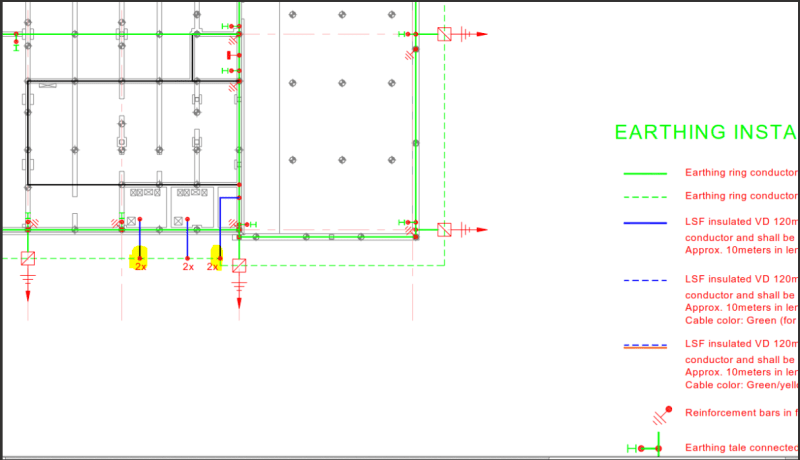Hello Everyone,
Site: Netherlands, Facility: Pharmaceutical
We have a grounding ring grid underground a building and the connections from this to the Earthing bars inside the building are supposed to be exothermic welds (According to a drawing which was produced earlier). the client is now asking if we can use clamps instead of the welds. I went through the standards applicable in Netherlands and in general and there was no mention of this requirement strictly mentioned. Are exothermic welds(Cadwelds) mandatory?
Please see the yellow highlighted connections below, that’s the connection

Thanks in advance,
Site: Netherlands, Facility: Pharmaceutical
We have a grounding ring grid underground a building and the connections from this to the Earthing bars inside the building are supposed to be exothermic welds (According to a drawing which was produced earlier). the client is now asking if we can use clamps instead of the welds. I went through the standards applicable in Netherlands and in general and there was no mention of this requirement strictly mentioned. Are exothermic welds(Cadwelds) mandatory?
Please see the yellow highlighted connections below, that’s the connection

Thanks in advance,
